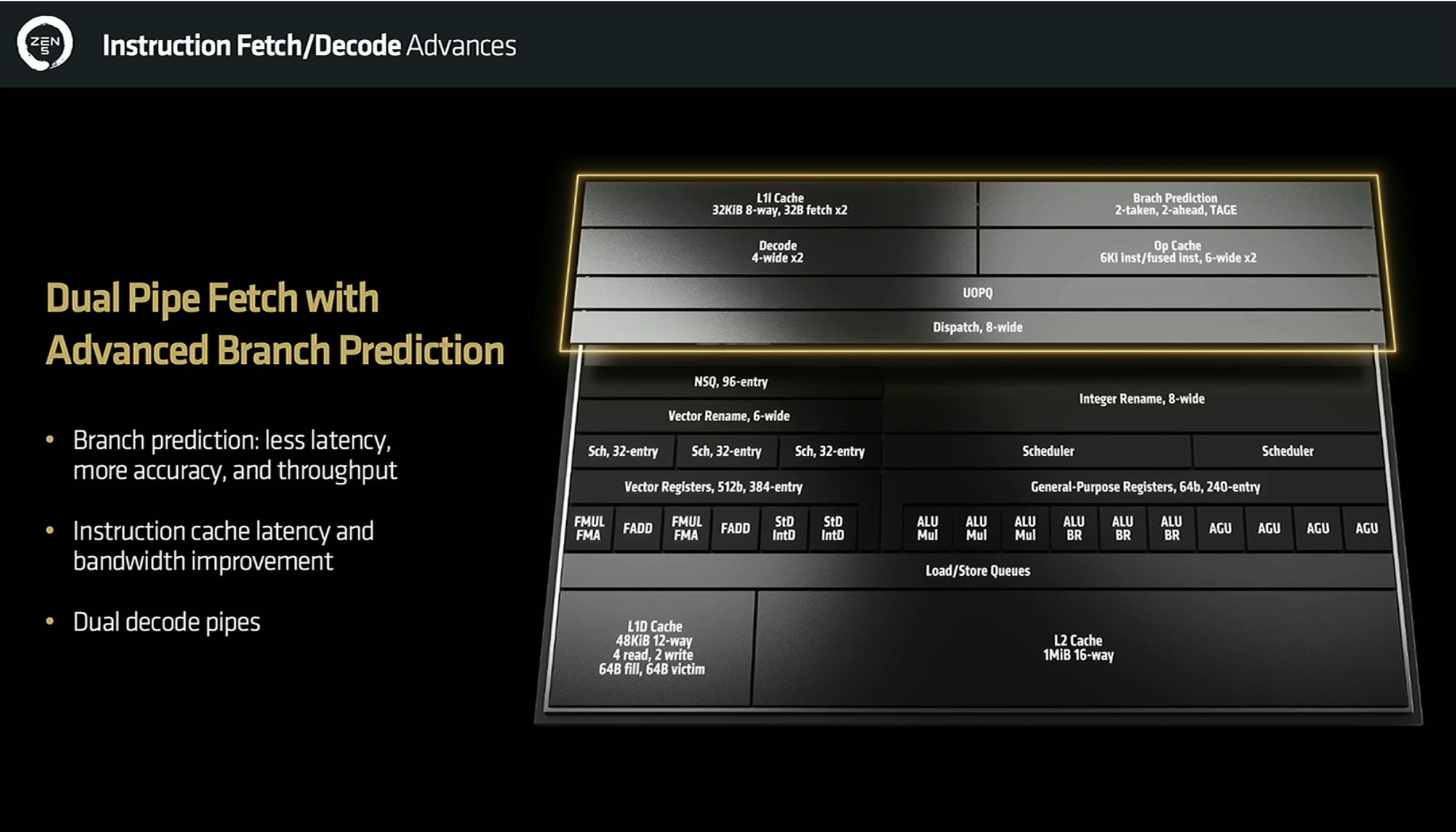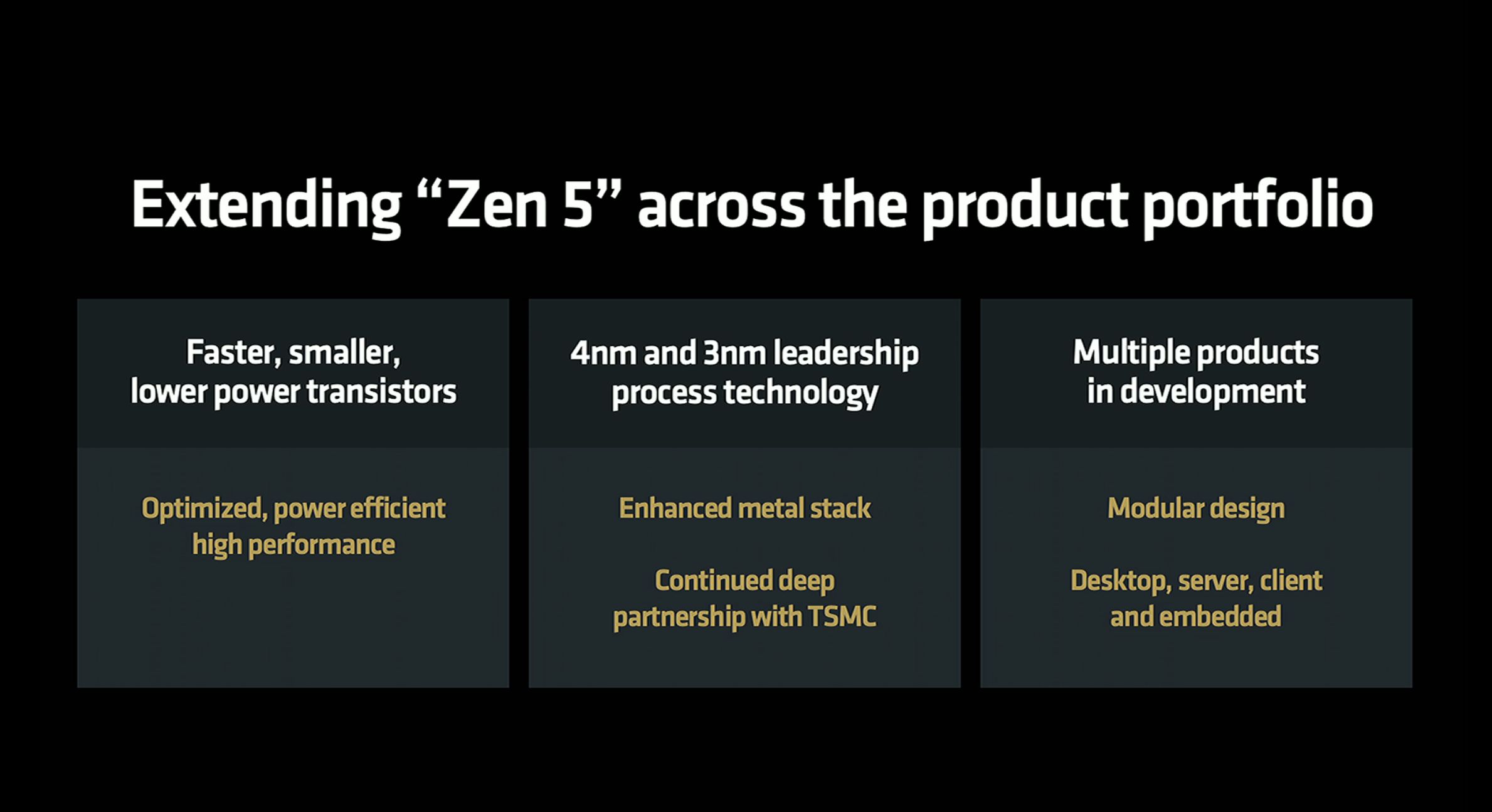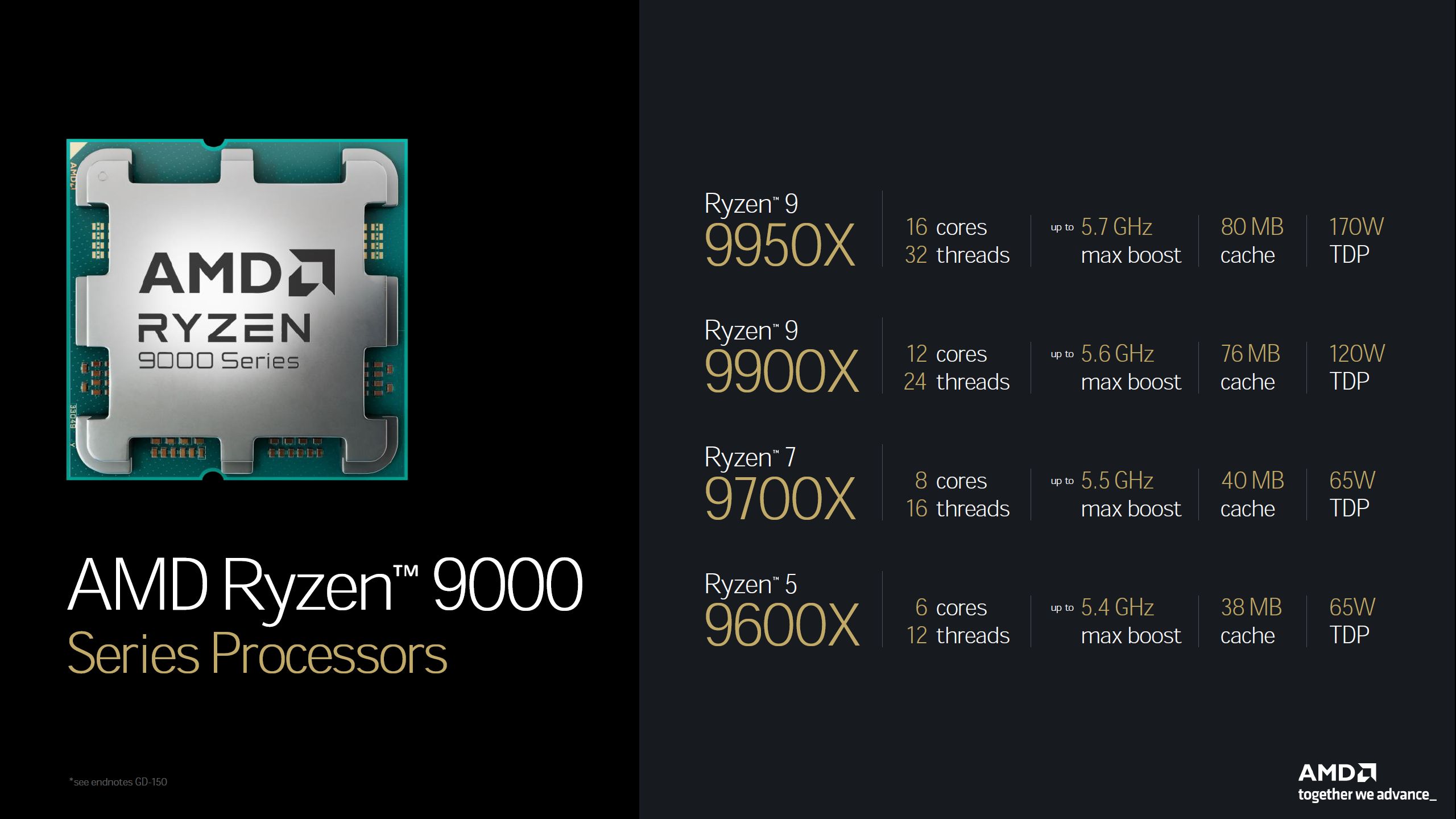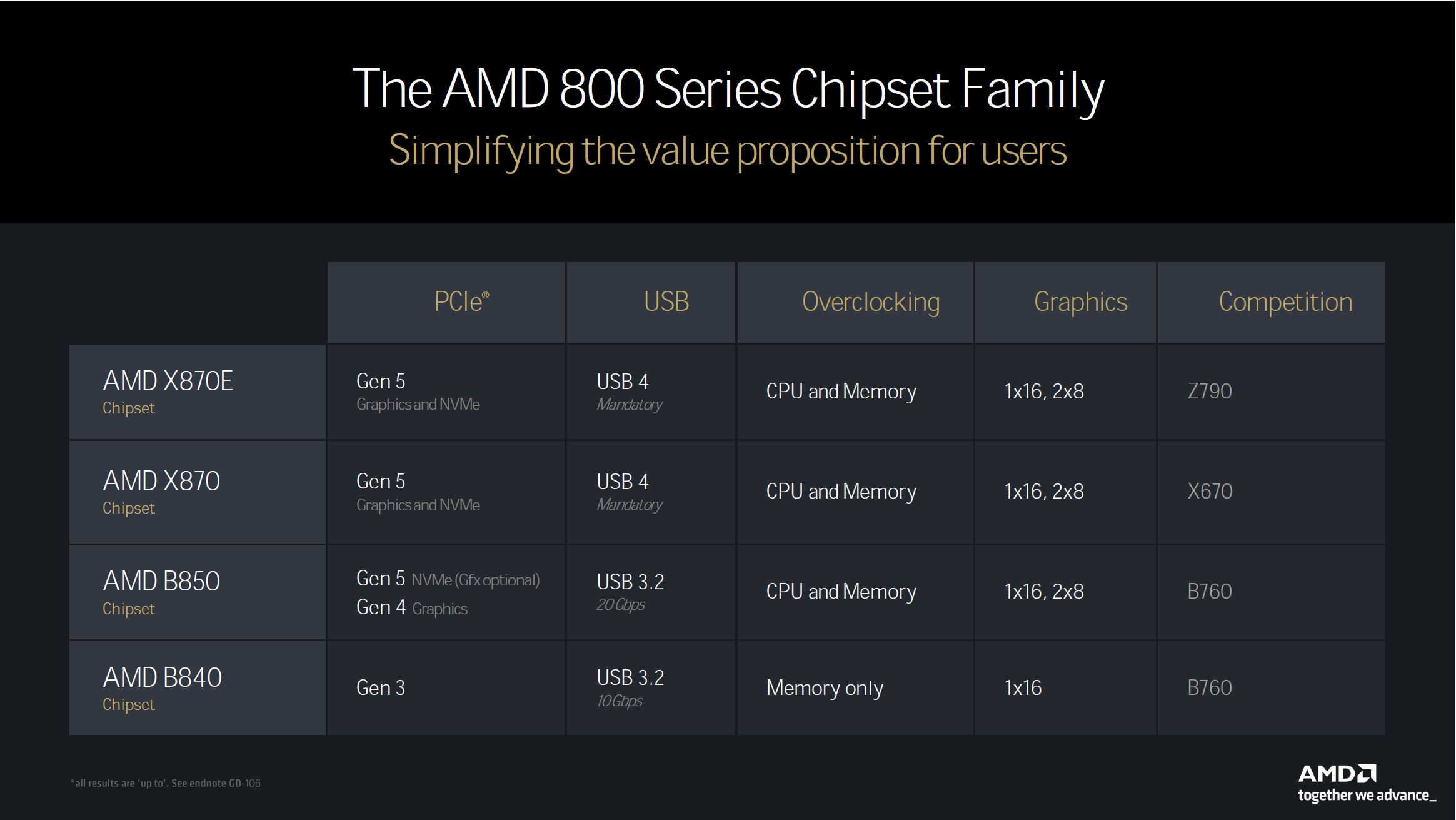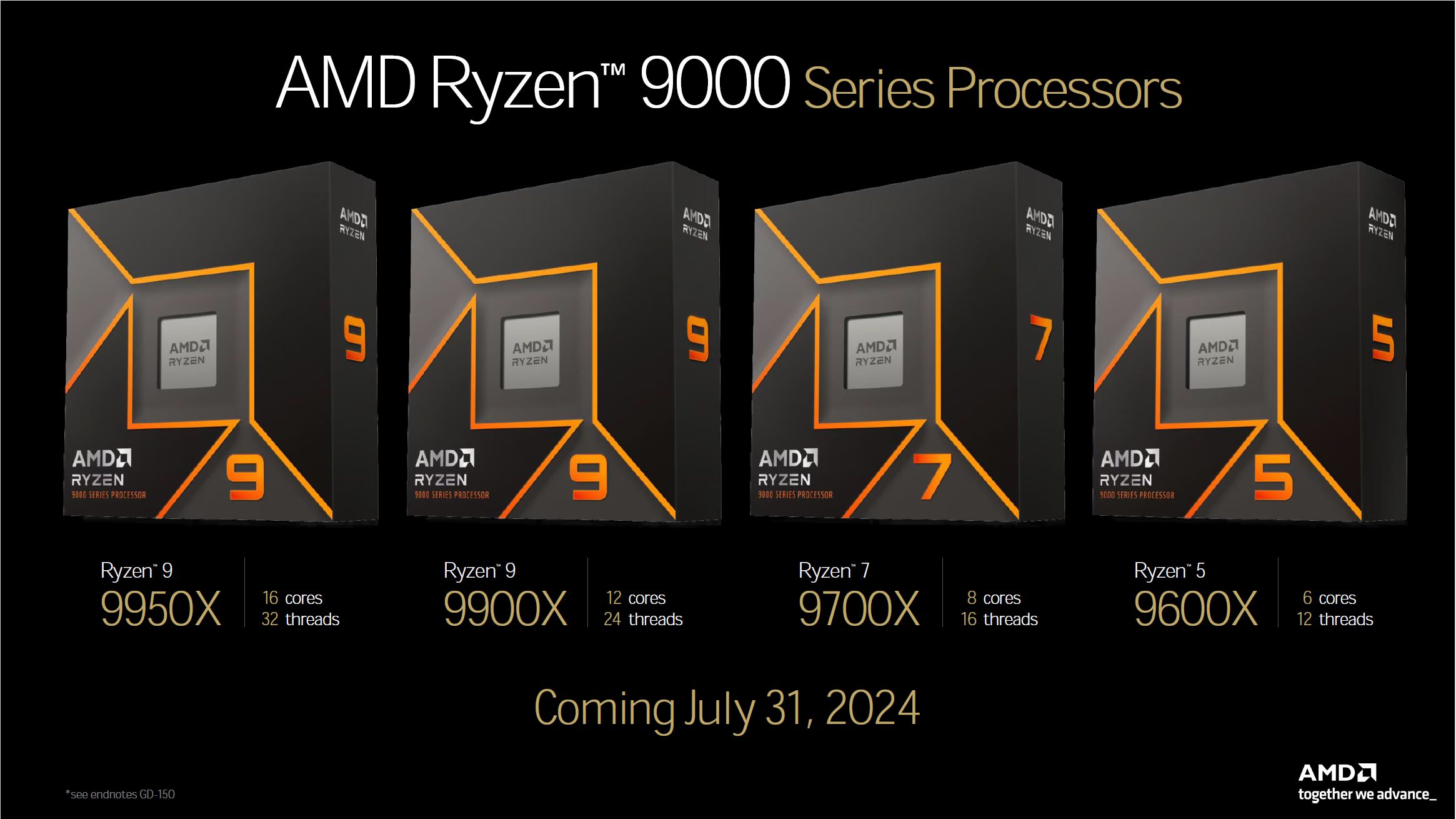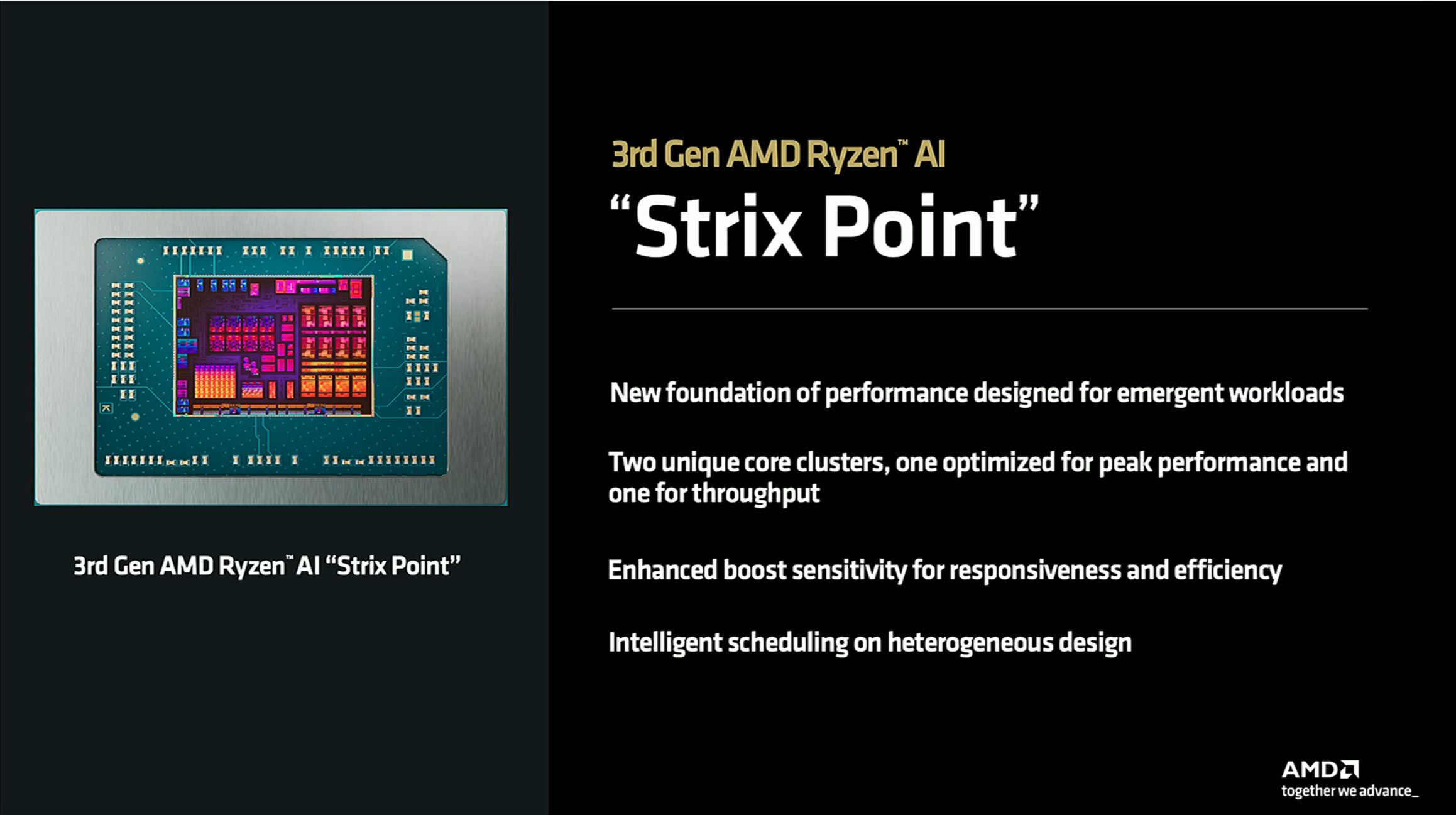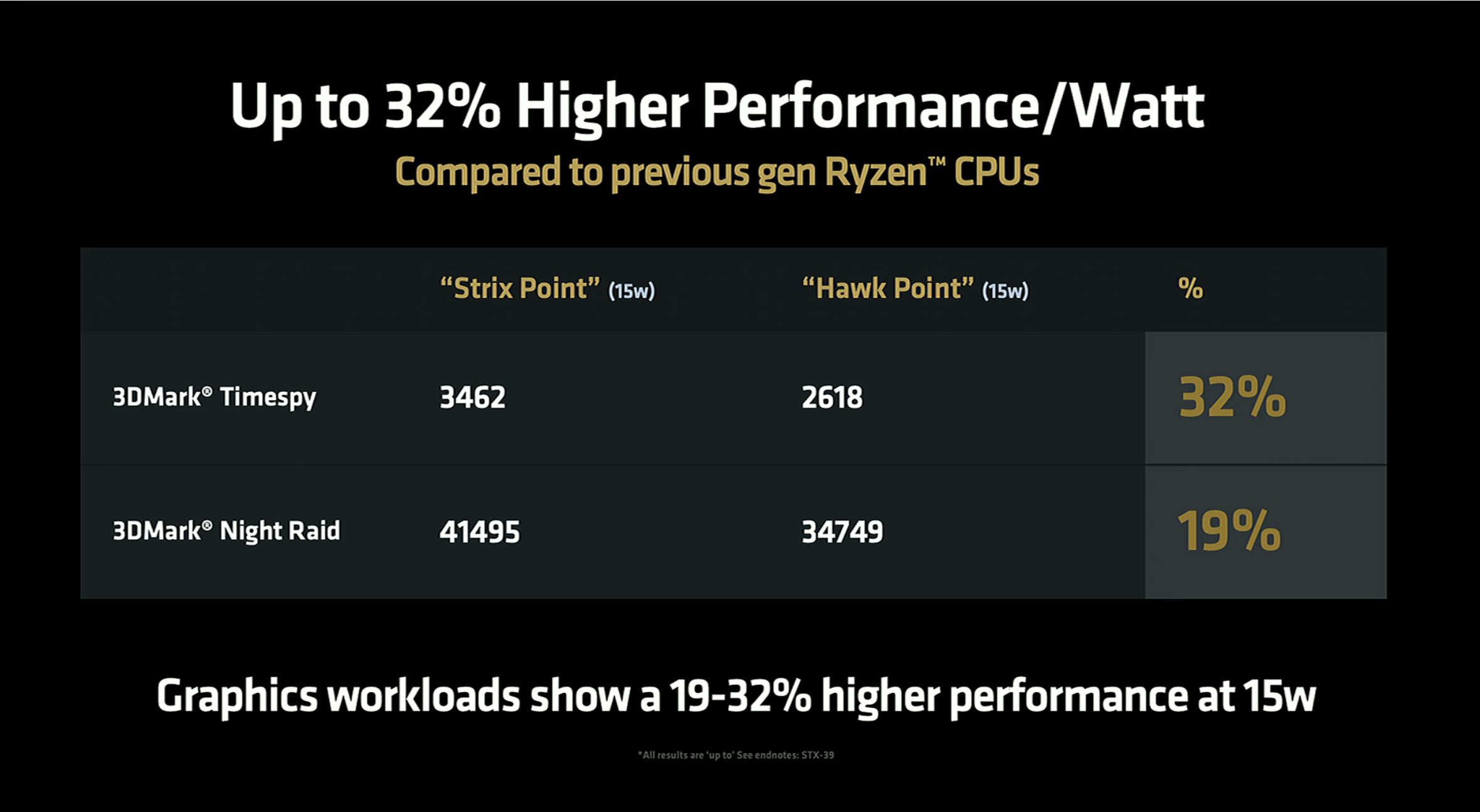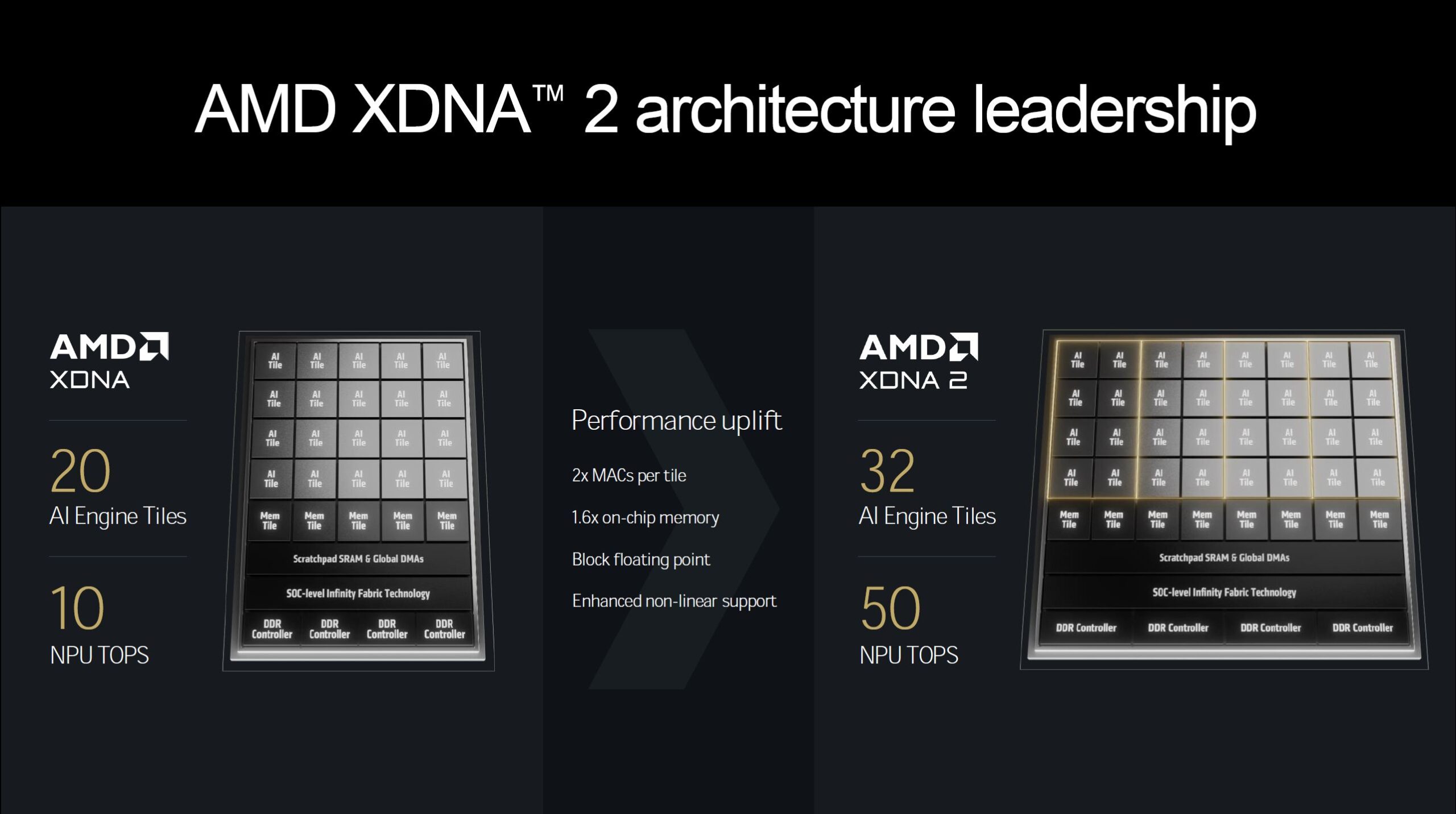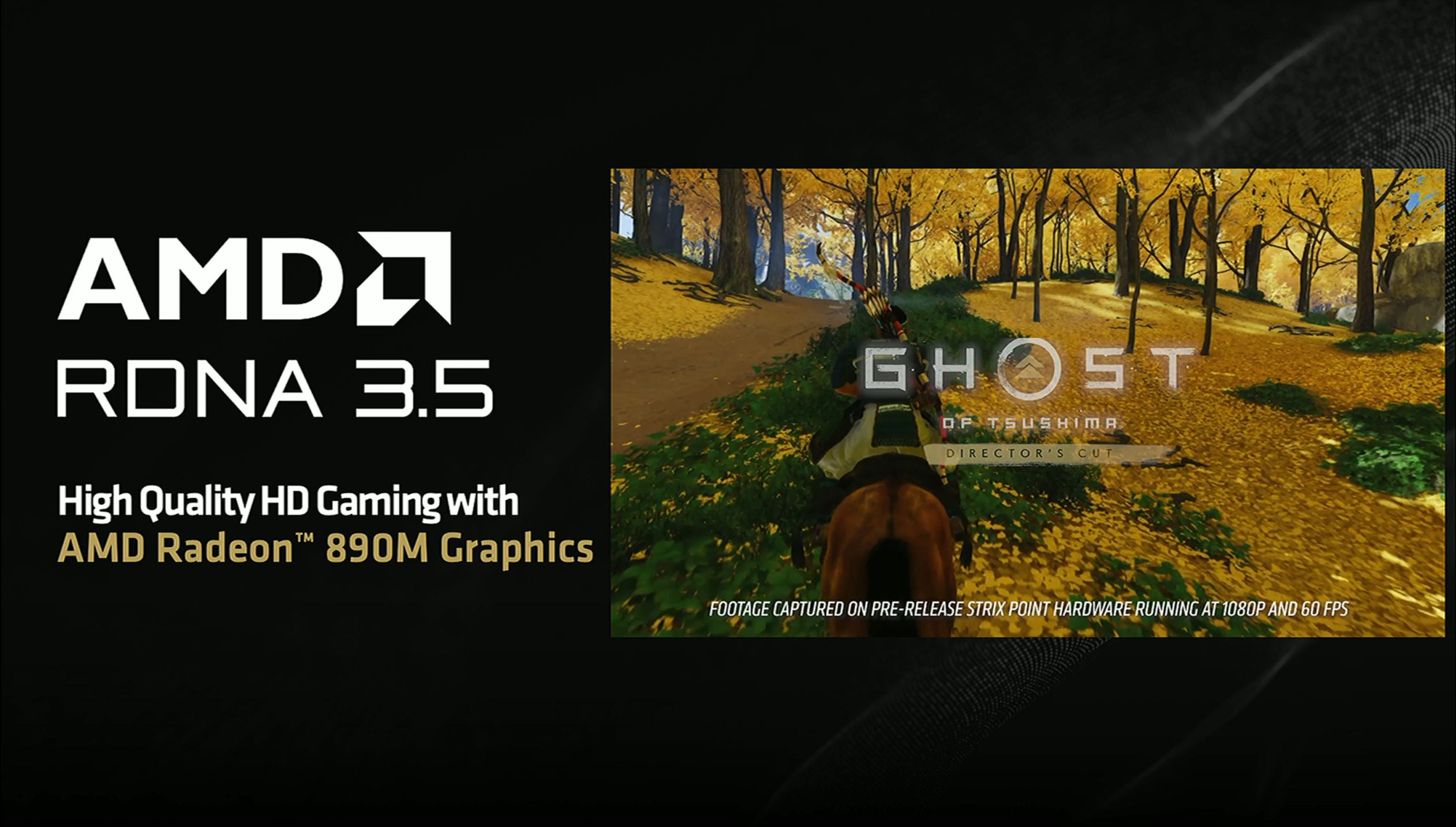Earlier last week, AMD held its bi-annual Tech Day over at California. The event essentially focused on the chipmaker’s latest Zen5 CPU architecture, RDNA3.5, XDNA2, the corresponding SKUs for desktops and laptop processors, and the products powered by them.
So, without further ado, here’s a simplification of the topics that were covered, post-Dr. Lisa Su’s announcement at Computex this year.
Ekeing Out More From Zen5
If you’re looking for the summary of Zen5: it’s better, faster, stronger, and more power efficient than Zen4. That’s the bottom line.
To elaborate further, AMD managed to increase the IPC between Zen4 and Zen5 by approximately 16%, across the broad range of workloads, ranging from gaming to post-processing. In machine learning, we’re looking at up to 32% generational improvement in single-core machine learning, and up to 35% single-core performance in AES-XTS.
It’s also based on a new enhanced metal stack, using both 4nm and 3nm processes in the manufacturing of these processors.
Ryzen 9000 Series Gets An Uplift And Launch Date
While it was made clear that the Ryzen 9000 Series would be launching this month, the event saw AMD provide a more specific launch date for the next-generation of desktop processors: 31 July 2024.
Like its predecessor, the AMD Ryzen 9000 Series still retains the AM5 platform but instead of Zen4, the whole series is based off the more powerful Zen5 architecture. At launch, consumers will have access to four SKUs: the Ryzen 9 9950X, Ryzen 9 9900X, Ryzen 7 9700X, and the Ryzen 5 9600X.
More importantly, the Ryzen 9000 Series will be compatible with last generation’s 600 Series motherboards but as the trend goes, AMD is launching a new lineup of 800 Series that complements the new suite of CPUs.
AMD has also improved its power and thermal efficiency on the Ryzen 9000 Series. Specifically, the new CPUs have 15% better thermal Resistance Improvement over the last generation, which has resulted in a drop of 7°C in overall temperature.
The Ryzen 9000 Series also gets improved overclocking features, such as new AGESA support for DDR5 RAM at speeds up to 800MT/s. Other new features include Memory Overclocking on-the-fly, and JEDEC support for DDR5-5600 memory. Oh, and there’s a new “Curve Shaper” that allows overclockers to dynamically adjust the voltage frequency curve.
Pushing The Envelope With “Strix Point”: Ryzen AI, RDNA3.5, And XDNA2
With the world having gone AI-crazy, adopting the technology was an effortless choice for AMD. Nowhere is this more evident than its new Ryzen AI 300 Series mobile processors, and their XDNA2 NPU.
As a quick primer, the XDNA2 NPU is AMD’s answer to its rivals Intel’s Lunar Lake and, more recently, Qualcomm’s new Snapdragon X Series processors, and even beats them out with a performance of 50 TOPs. The most its rivals are able to churn out from their respective NPUs is 48 TOPS.
To provide some internal specs, XDNA2 feature 32 AI Engine Tiles, 12 more than the previous generation XDNA. That translates into around five times more Compute capacity for the AMD Ryzen AI 300 processor, and up to 2x better power efficiency compared to the Ryzen 7040 Series.
And then there are the RDNA3.5 graphics cores that are nestled within the AMD Ryzen AI 300 Series processors. As initially reported, the GPU is less of an upgrade and more of a tweaking and refinement of the chipmaker’s RDNA3 technology. Long story short, in performance-per-watt, the new GPU – primarily the Radeon 890M – has double the Texture Sampler Rate, and double the Interpolation and Comparison Rates.
AMD did provide a visual demonstration of the AMD Radeon 890M running Ghost of Tsushima at 60 fps at Full HD resolution, although it should be noted that the presentation didn’t specify if the game was running with FSR3 and Frame Generation turned on.
Follow us on Instagram, Facebook, Twitter or Telegram for more updates and breaking news.



